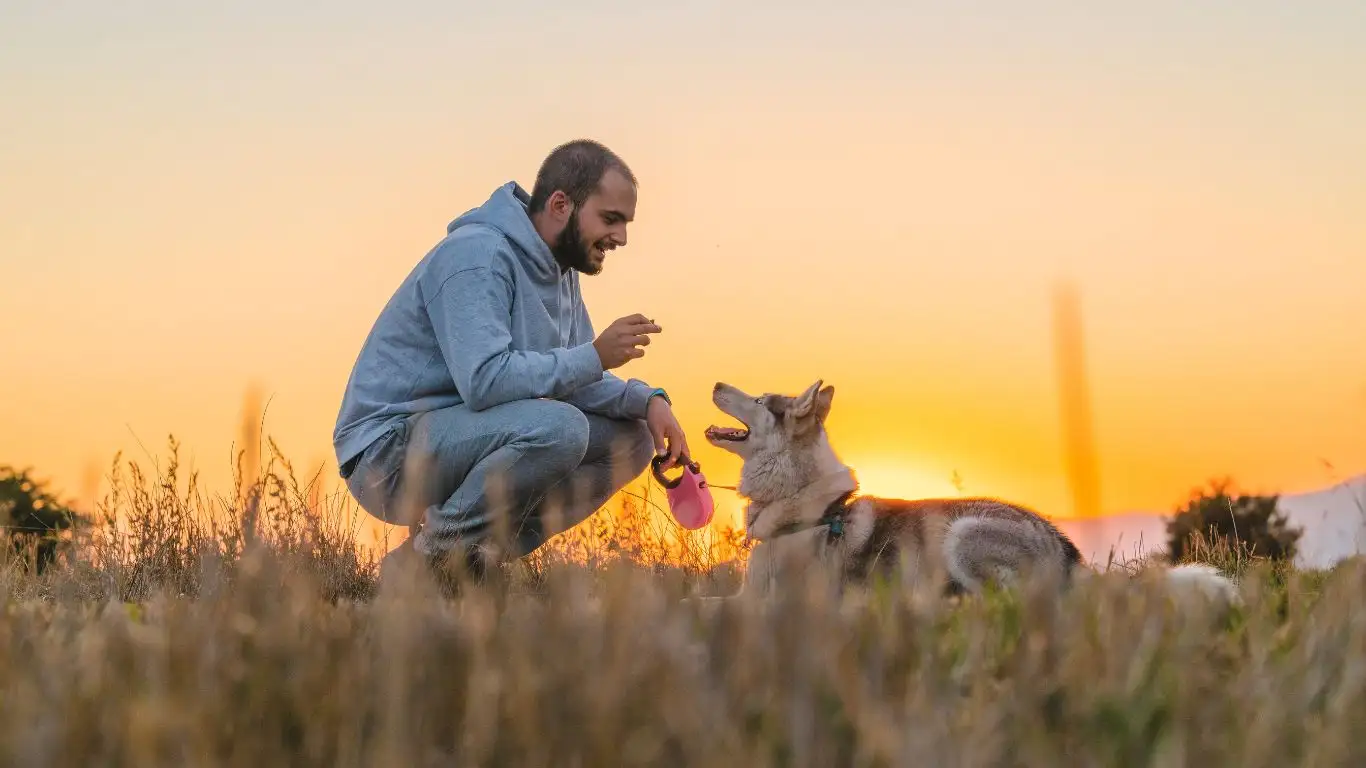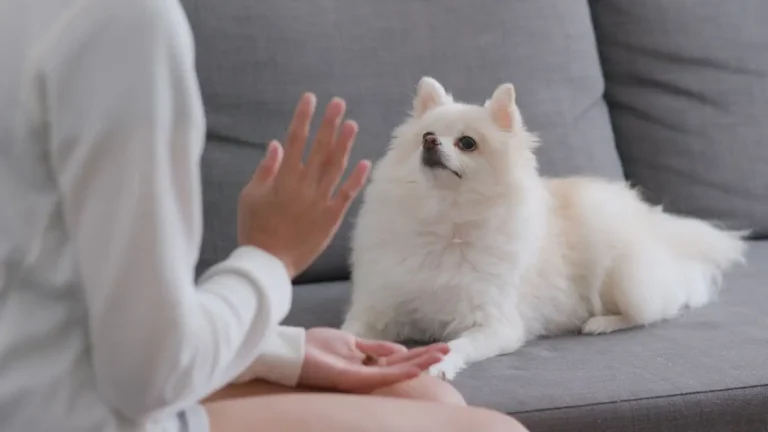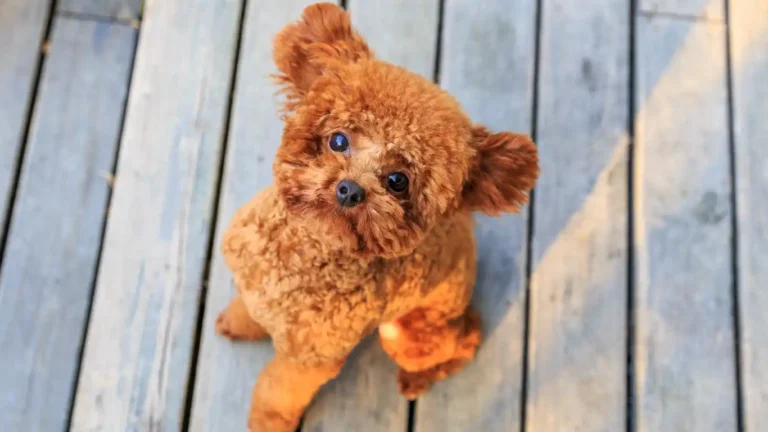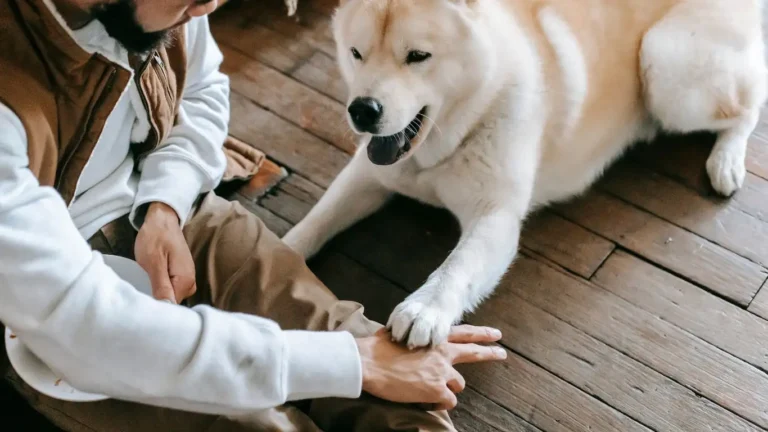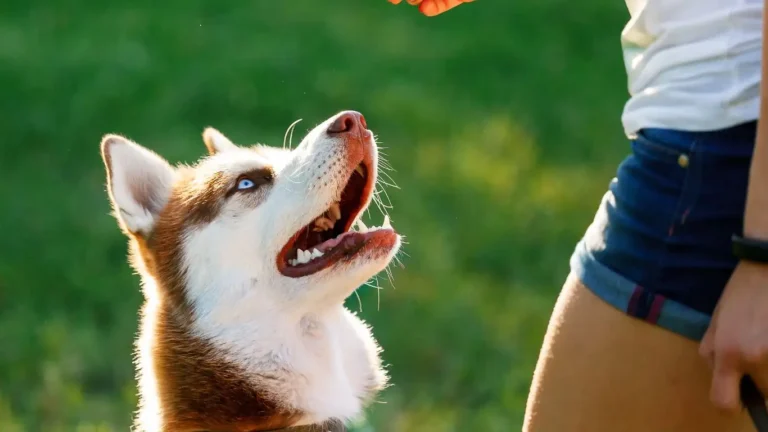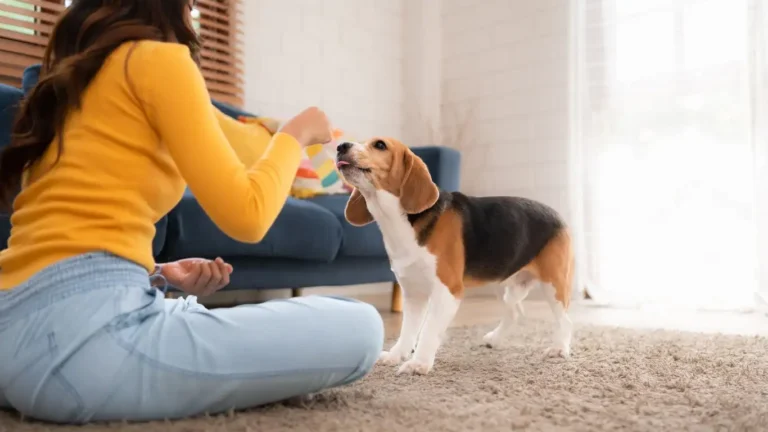How to Teach a Dog to Shake Hands on Command: Easy Steps for Success
Teaching a dog to shake hands on command is one of the most fun and rewarding tricks to teach your furry friend. It’s not just about the trick itself, but about building a stronger bond with your dog while also tapping into their natural instincts. As a Certified Professional Dog Trainer with years of experience, I can tell you that this seemingly simple behavior can be a great way to engage with your dog and reinforce your training skills. Plus, it’s always a crowd-pleaser! In this post, I’ll guide you step by step on how to teach a dog to shake hands on command, drawing from my own personal experiences in dog training to make sure you get the best results.
Why Teaching Your Dog to Shake Hands Is More Than Just a Trick
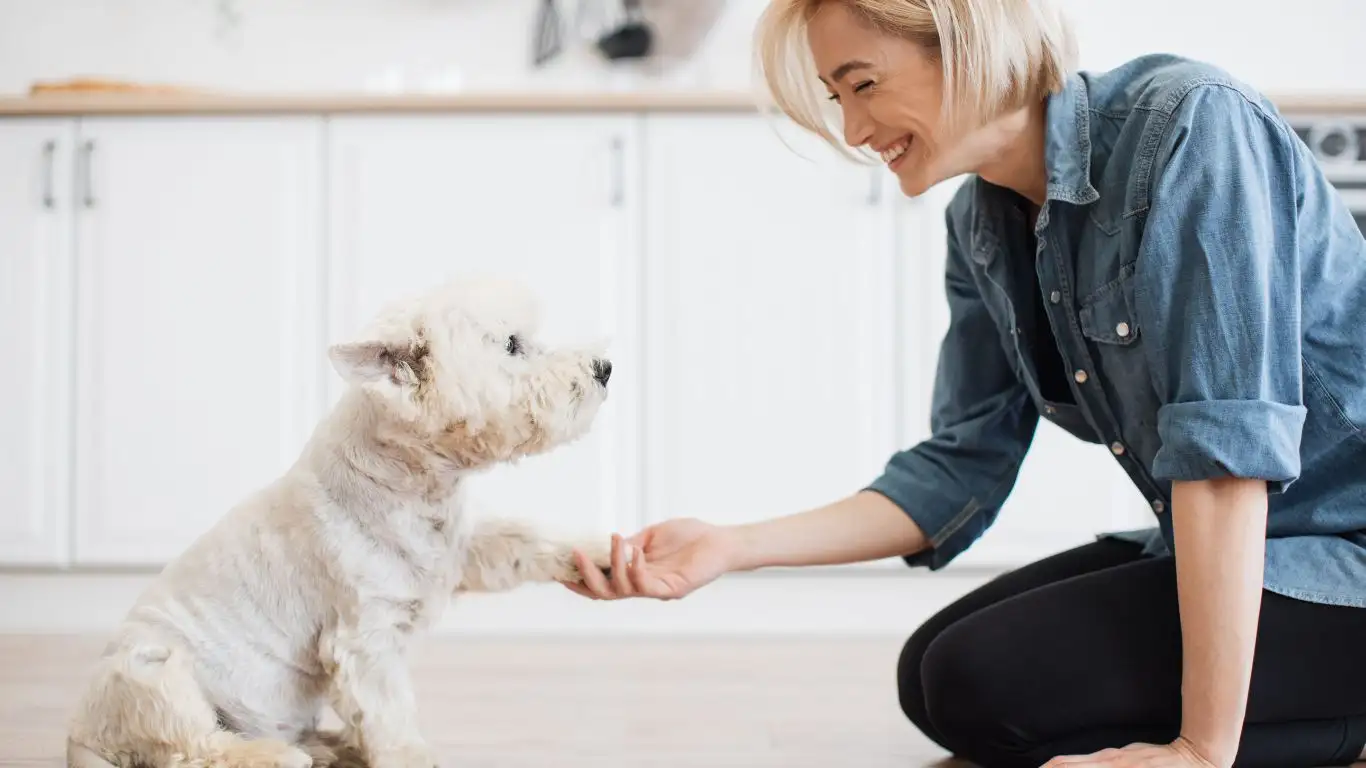
If you’ve ever watched a dog perform a trick like shaking hands, you know how charming it can be. But there’s a lot more to it than just impressing your friends or giving your dog something to do. Teaching your dog to shake hands is a great way to improve communication between you and your pup. It’s an excellent opportunity to reinforce good behavior while also providing mental stimulation for your dog. Plus, it’s an ideal way to engage with your dog in a positive and constructive way, which can help foster a stronger relationship.
From a behavioral standpoint, dogs love routines and repetition, so teaching them a simple command like shaking hands builds trust. It also improves your dog’s ability to learn other commands. When you begin with an easy trick like this, your dog learns the basics of understanding your expectations and reacting appropriately. Plus, it’s just fun—both for you and your dog!
Preparing for Success: Setting the Right Environment
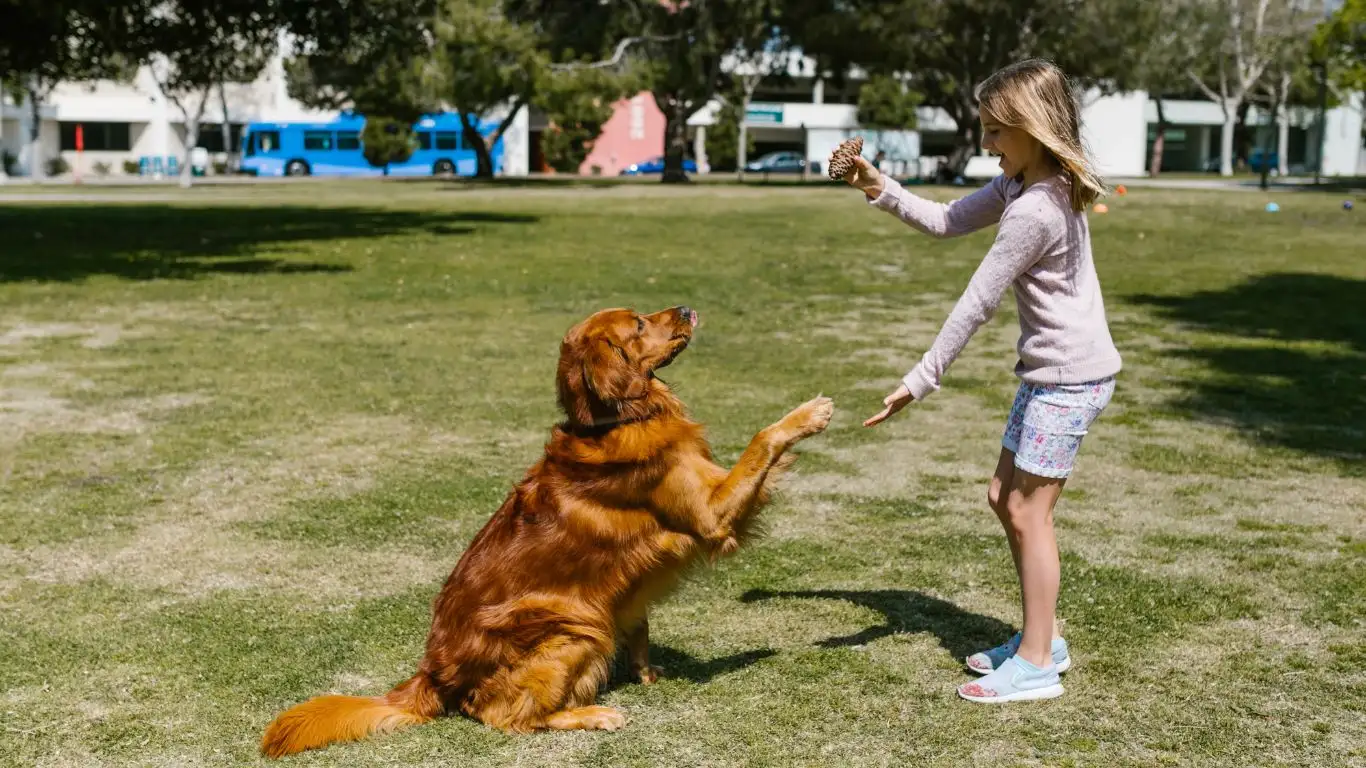
Before you even start teaching your dog to shake hands, you need to set up the right environment for training. A peaceful, distraction-free zone is essential, especially when you’re teaching a new behavior. Trust me, I’ve worked with plenty of dogs, and one of the biggest challenges when starting a new trick is making sure your dog’s attention is on you. Here are a few tips to ensure the space is optimal for training:
- Pick a quiet area – Choose a spot where there aren’t too many distractions. If your dog is overly stimulated by the environment, they may not focus on you during training.
- Keep training sessions short – Dogs, especially puppies, have short attention spans. Aim for 5 to 10-minute sessions to prevent your dog from becoming frustrated or bored.
- Have treats ready – Make sure you have high-value treats on hand that your dog loves. The more motivated they are by the treats, the quicker they will learn.
Why Treats Matter
As a dog trainer, I can tell you that rewards are an essential part of the training process. I’ve had clients who’ve asked me whether treats are really necessary, and while they’re not the only way to reward your dog, they are one of the most effective ways to reinforce positive behavior. If you think about it, when your dog does something you like—like offering their paw—it’s only fair to reward them. This creates a positive association with the behavior.
Now, this doesn’t mean you need to break out the super high-calorie treats every time. You can use small, healthy treats that won’t fill your dog up too quickly. But keep in mind, what matters is finding something that excites your dog! Every dog is different, so try experimenting with different treats and see which ones your dog loves most.
Step 1: Get Your Dog’s Attention
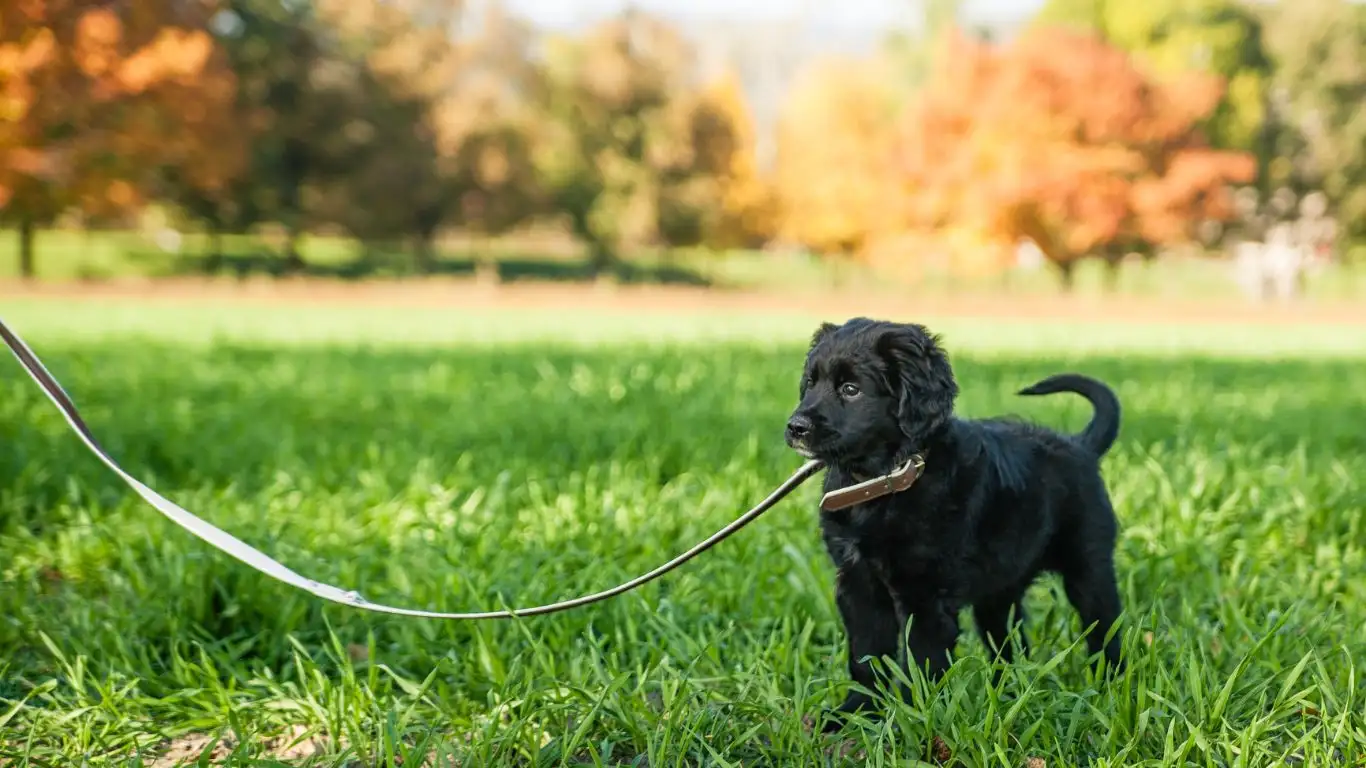
The first thing you’ll need to do when teaching your dog how to shake hands is to grab their attention. This can sometimes be the trickiest part, especially if your dog is naturally more distracted or energetic. Here’s how I usually approach it:
- Get down to their level – Whether it’s sitting or kneeling, make sure you’re at eye level with your dog. This helps them focus on you and lets them know you’re about to start something fun.
- Use their name – Say your dog’s name to get them focused on you. You can also use a command like “watch me” if your dog is trained to do that.
- Hold a treat in your hand – Hold the treat in front of your dog’s nose so they can smell it. This will naturally grab their attention and help them stay focused on you.
Once you’ve captured their attention, you can move on to the next steps. But remember—if your dog is distracted and not paying attention, it’s okay to take a break and try again later. Patience is key!
Step 2: Teach the “Paw” or “Shake Hands” Action
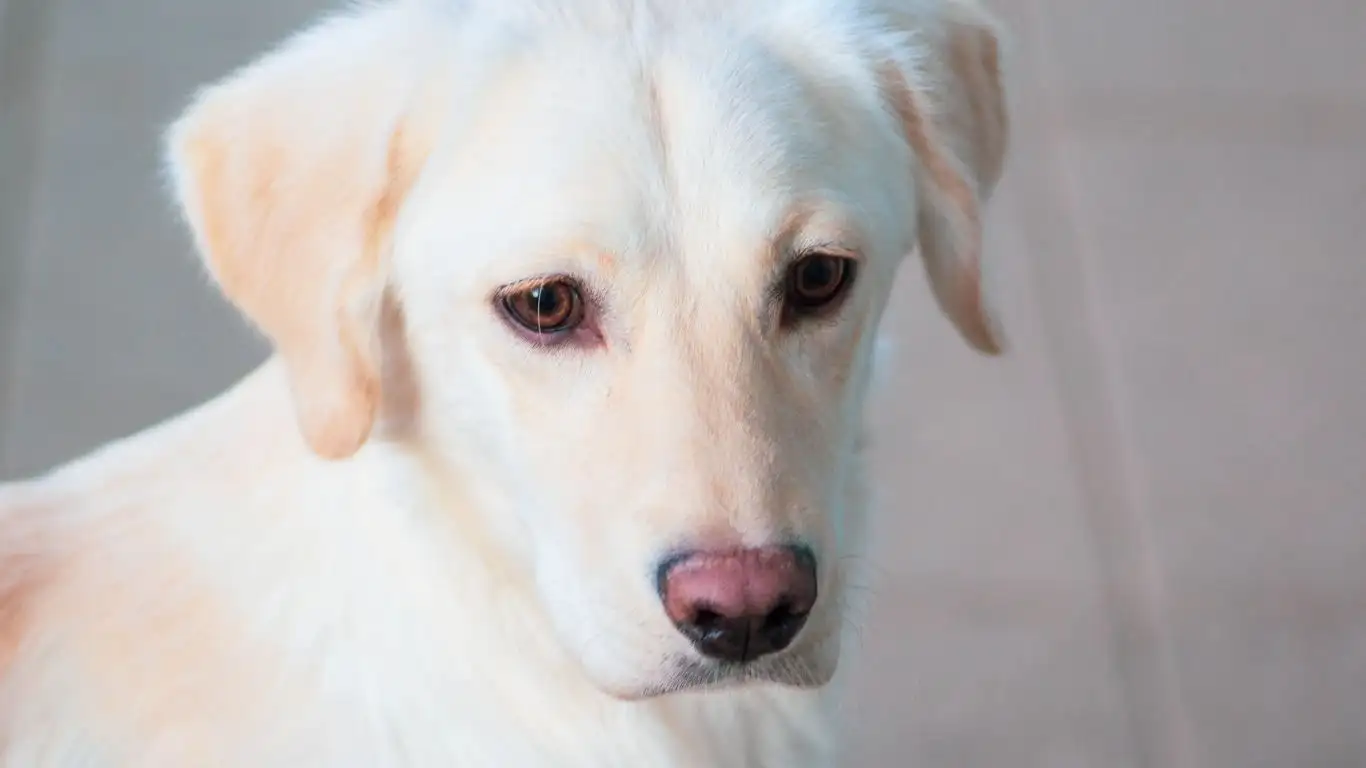
Now that you’ve got your dog’s attention, it’s time to teach them the “shake hands” action. This is where the magic happens! The way you get your dog to offer their paw is pretty simple, but it requires some patience and consistency.
Here’s the method I use to get the paw moving:
- Lift the paw gently – With a treat in your hand, hold it just above your dog’s paw, and gently lift their paw up with your hand. It may take a few tries, but that’s okay—don’t force it. You want to make sure your dog feels comfortable with this interaction.
- Associate the action with the word “Shake” – As soon as your dog’s paw is lifted, say the word “shake” or “paw” in a calm and clear tone. Be consistent with the word you use. The goal here is to associate the movement of the paw with the word, so every time your dog hears “shake,” they know what’s coming.
- Reward immediately – As soon as your dog offers their paw, even if it’s just a little lift, give them the treat and praise them enthusiastically. This helps reinforce the behavior right away.
One thing I’ve learned through years of training is that timing is key. You want to reward the behavior immediately after it happens, so your dog connects the action with the reward. This is why I emphasize keeping training sessions short and sweet—your dog’s focus and energy are best when it’s fun and rewarding for them!
What to Do If Your Dog Doesn’t Lift Their Paw
Sometimes, your dog may be a little hesitant or confused about offering their paw. Don’t worry if this happens! Some dogs need more encouragement than others, especially if they’ve never been asked to do something like this before. Here’s what I suggest:
- Try gently lifting the paw every time – If your dog doesn’t offer their paw on their own, you can try lifting it for them and rewarding them once the action is complete.
- Use positive reinforcement – Always reward even the smallest effort. If your dog just lifts their paw a tiny bit, that’s progress! Reward it, and they’ll get the hang of it over time.
- Be patient – Dogs learn at their own pace, and forcing or rushing them can actually cause stress. Keep things relaxed and enjoyable, and your dog will feel more comfortable.
Step 3: Add the Command and Make It Consistent
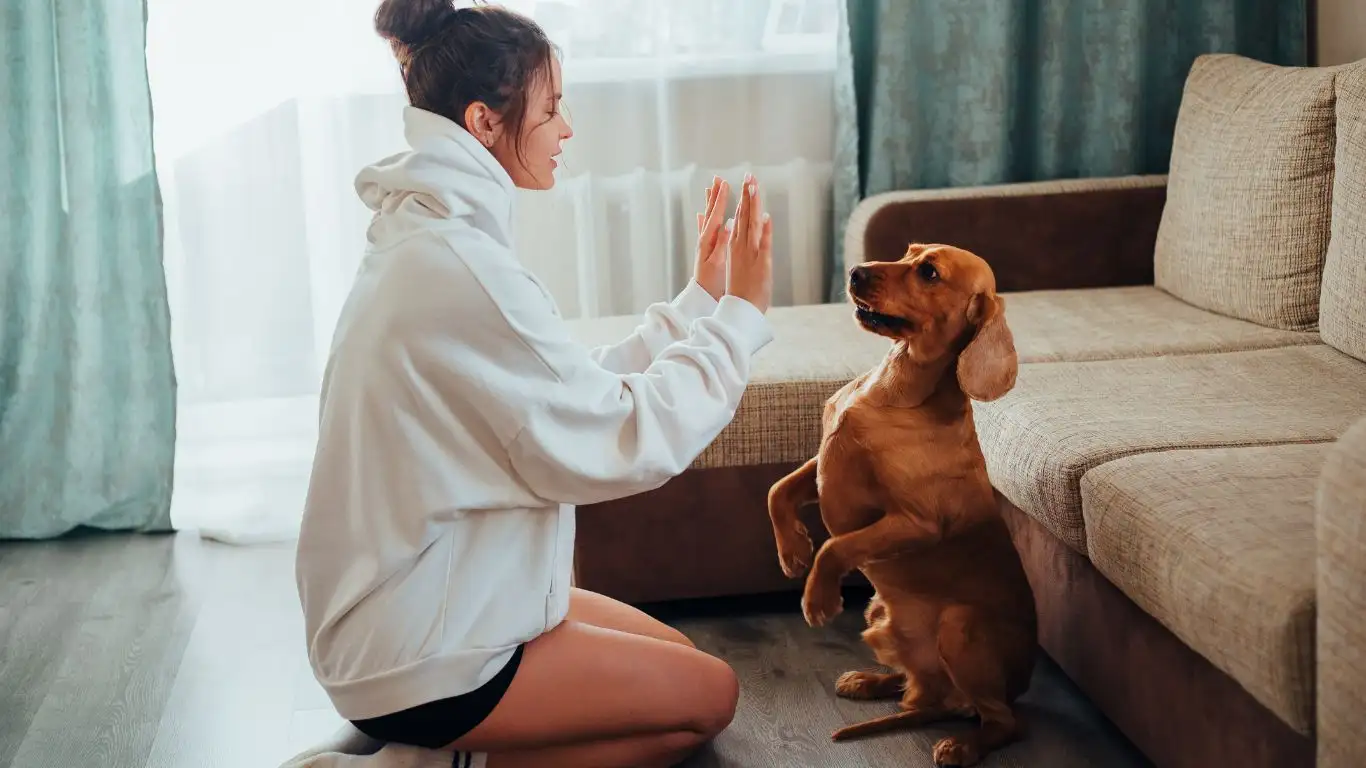
Once your dog has learned to lift their paw when you give the signal, it’s time to make it more consistent. This is when adding the verbal cue and increasing the behavior’s reliability comes into play.
As I always tell my clients, consistency is crucial in dog training. If you’re teaching your dog how to shake hands, you want them to reliably offer their paw every time you ask. Here’s how to help them get there:
- Repeat the process often – The more you repeat the same steps, the quicker your dog will start to associate the word “shake” with the action. Practice multiple times a day, but keep it short. You don’t want to overwhelm your dog with too many sessions.
- Gradually fade out the physical assistance – After a few successful attempts, start lifting your dog’s paw with less assistance. You don’t want to do this too soon, but once your dog is offering their paw consistently, you can begin to fade out your hand’s involvement. Let them do more of the action themselves.
- Only reward correct behavior – In the early stages, you might accidentally reward incorrect or partial attempts. Be mindful of only rewarding when your dog gives you the full action of lifting their paw. This helps your dog learn exactly what you’re asking for.
One of the key things I’ve learned over the years is the importance of patience. When I was training my own dogs, I realized that building a good habit takes time. Sure, there were times I thought, “Why isn’t this happening faster?” But each little success was a sign that I was getting closer to the goal. So don’t rush it—let your dog work at their own pace.
Step 4: Proof the Behavior for Different Environments
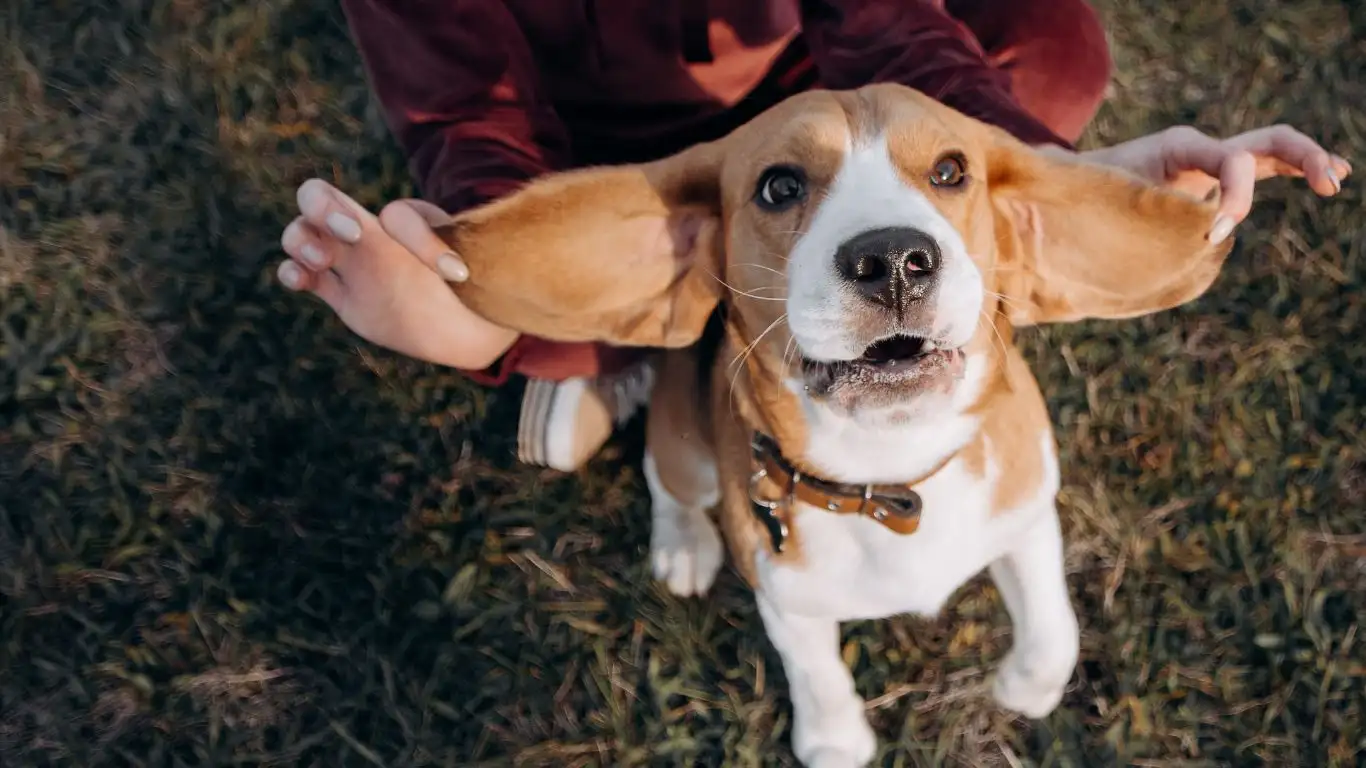
Once your dog can consistently shake hands on command in a quiet, familiar environment, it’s time to test the behavior in different situations. This is known as “proofing” the behavior, and it’s an important step to ensure that your dog can do the trick anywhere, anytime, under any circumstance.
Here’s what I recommend:
- Practice in different locations – Start asking your dog to shake hands in other rooms of the house, then move to the backyard, the front yard, and even out in public places (like the park). The more you practice in varied locations, the more reliable your dog’s behavior will become.
- Increase distractions slowly – Once your dog can shake hands reliably at home, start adding in distractions. This might include other people, other dogs, or new sounds. Keep your sessions short and fun, and reward your dog for staying focused.
- Be consistent with the cue – No matter where you are or who is around, always use the same verbal cue, body language, and behavior when asking for the shake. Consistency is the foundation of reliable training.
In my experience, proofing is where the real progress happens. It’s not enough for your dog to know how to shake hands when everything is calm and quiet. You want them to be able to do it confidently in a variety of environments, and that’s where a lot of the hard work pays off!
Case Studies & Real-Life Examples
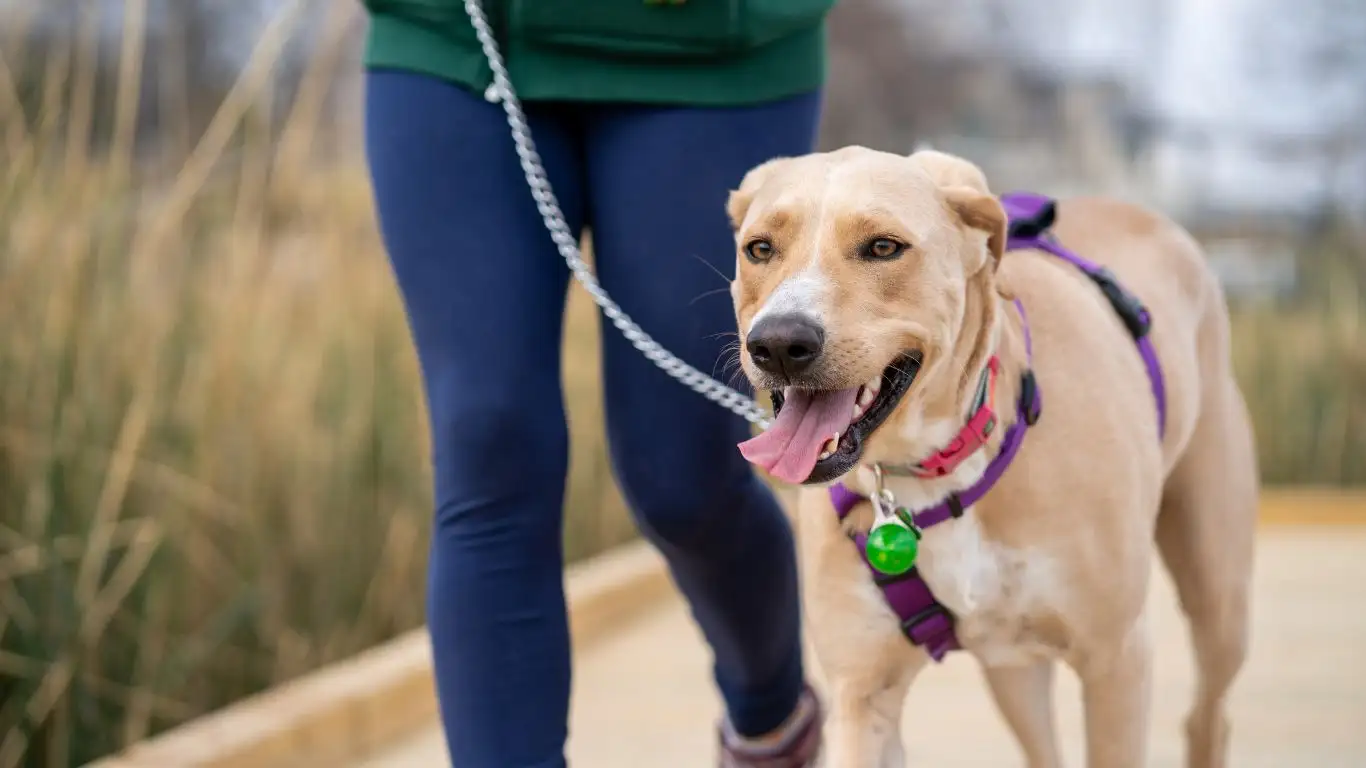
Over the years, I’ve worked with a wide variety of dogs, from energetic puppies to older dogs with less focus. Every dog is different, so the process of teaching “shake hands” can look a little different for each one. Let me share a few stories from my own experience to illustrate the process and how it can play out in real life.
Case Study 1: Daisy the Shy Rescue Dog
Daisy, a 3-year-old rescue dog, was a bit hesitant around people. She had a history of being neglected, so she wasn’t the most trusting. At first, she wouldn’t even look at my hand when I extended it. But with patience and positive reinforcement, we made some great progress.
In our first few sessions, I had to be extra careful not to overwhelm her. I started with getting her comfortable just sitting next to me and then rewarding her with a treat for making eye contact. After a few days, I moved to the paw-lifting part of the training. It took a while for Daisy to even think about lifting her paw, but I gently guided her paw with my hand while saying “shake.”
Slowly but surely, Daisy started offering her paw more confidently. By the end of our training sessions, she would offer her paw on command, and it became one of her go-to tricks when meeting new people! The transformation from hesitant to confident was incredibly rewarding to witness.
Case Study 2: Max the Hyperactive Puppy
Max was an excitable, 6-month-old Golden Retriever puppy who couldn’t sit still for more than 10 seconds. As you can imagine, training him to shake hands on command was a bit of a challenge at first. With puppies like Max, I always advise starting training in short, fun bursts to keep their attention.
We began with very short sessions (about 5 minutes) and used lots of praise and treats to keep Max engaged. The trick for him was focusing his energy enough to pay attention to the hand target. To help him calm down, I would do some basic sit and stay training first, and once Max was in a calmer state, I’d introduce the “shake” command. Max was a fast learner, and by the end of the first week, he was offering his paw consistently.
What’s great about working with a puppy like Max is that their brains are like little sponges—once they catch onto the idea of training, they love to show off their new skills. Max was one of those dogs that loved the attention, so teaching him how to shake became a fun game we could repeat over and over.
Key Takeaways: What You Need to Remember
Teaching your dog how to shake hands on command is a fun and rewarding experience, but it’s also about building trust and improving communication. Whether you’re working with a puppy, a rescue dog, or an adult dog, consistency, patience, and positive reinforcement are key to success.
- Consistency is your best friend – Whether it’s using the same command or rewarding immediately, consistency will help your dog learn faster and more reliably.
- Patience pays off – Don’t rush the process! Every dog learns at their own pace, and some might take a little longer to get the hang of it.
- Keep training sessions short and fun – Dogs have short attention spans, especially puppies. A 5-minute session, repeated several times a day, is often more effective than a longer session.
- Use positive reinforcement – Reward every success, even small ones. This builds confidence in your dog and motivates them to continue offering the behavior.
- Make it a game – Once your dog has the basics down, make it fun by adding some flair. Try teaching “shake” in different places, with different people, or while they’re in different positions (like sitting, standing, or lying down).
FAQs
Q: My dog isn’t lifting their paw. What should I do?
A: Sometimes dogs are unsure about lifting their paw at first. Gently help them by lifting their paw yourself and saying “shake.” With patience and repetition, they will begin to offer the paw on their own. If they’re still hesitant, try using a different treat or reward to motivate them.
Q: How long will it take for my dog to learn how to shake hands?
A: It depends on your dog’s age, temperament, and experience with training. Generally, a dog will start offering their paw within 3-5 days of consistent training, but mastery of the behavior might take a couple of weeks. Be patient and keep training sessions short and positive.
Q: Can older dogs learn this trick too?
A: Absolutely! While puppies are quick learners, older dogs can definitely pick up new tricks as well. In fact, teaching an older dog to shake can be a great way to give them some mental stimulation. Just make sure to adjust the training pace to their needs and energy level.
Q: How can I make sure my dog is comfortable during training?
A: Comfort is key! Keep the training environment calm, use gentle movements when helping them lift their paw, and take breaks if they seem frustrated. Always reward them with positive reinforcement to keep the experience fun and stress-free.
Bonus: Additional Resources or DIY Tips
If you’re interested in learning more about dog training or want to expand your repertoire of tricks, here are a few extra resources that might help:
- PawPatron Dog Training Guide – A comprehensive resource for dog training tips and tricks.
- Behavioral Training Tips – Articles focusing on overcoming common behavioral issues in dogs.
- Puppy Training 101 – A helpful guide for training puppies, from the basics to advanced commands.
Appendix: Table, References, Disclaimer, and Call to Action
References: For more information on dog training and behavior, check out the following resources:
Disclaimer: This article is intended to provide general guidance for teaching dogs to shake hands. Individual dogs may have different learning styles and speeds, so always consult with a professional dog trainer if needed.
If you’ve enjoyed this guide, I encourage you to try teaching your dog to shake hands today! And feel free to share your training stories with me—I’d love to hear about your experiences! Happy training!
